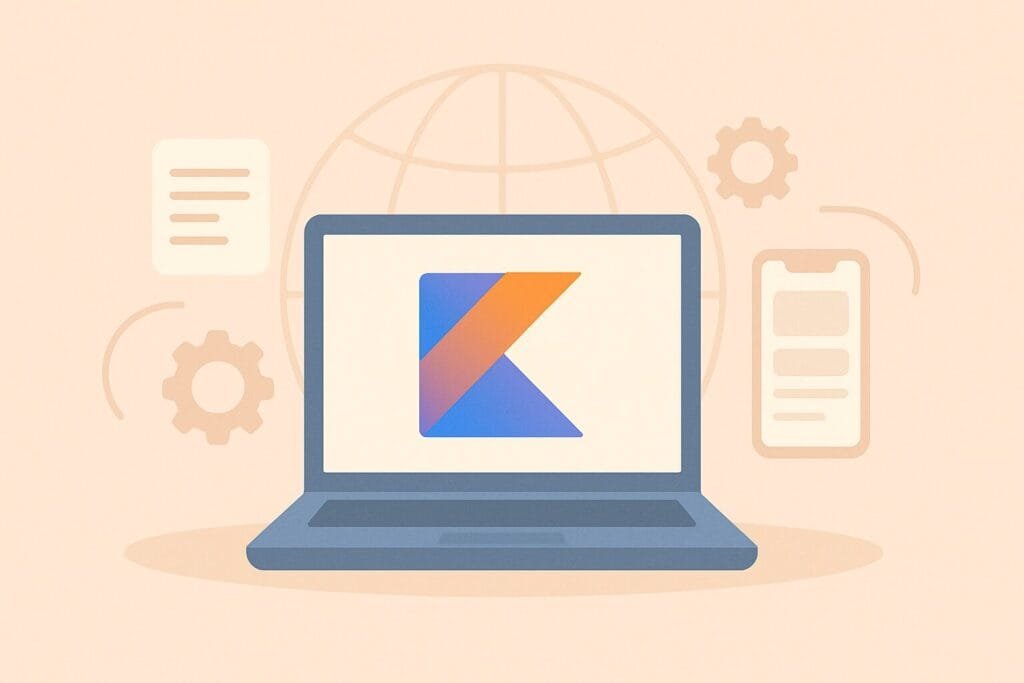Kotlin Multiplatform (KMP) is increasingly gaining traction as a powerful tool for sharing code across different platforms. Developed by JetBrains, the same company behind Kotlin, KMP allows developers to write business logic once and reuse it across Android, iOS, desktop, web, and even backend applications. This article explores how Kotlin Multiplatform is being used in real-world projects, the benefits it offers, and practical considerations before implementing it in your codebase.

What is Kotlin Multiplatform?
Kotlin Multiplatform is not about creating one universal application like traditional cross-platform solutions (e.g., Flutter or React Native). Instead, it focuses on code sharing, primarily the logic layer, while still allowing developers to write native UI for each platform. This approach results in more maintainable and scalable projects while preserving native performance and user experience.
Real-World Use Cases
Many leading companies have already adopted Kotlin Multiplatform to improve development efficiency and consistency across platforms. Examples include:
- VMware: Utilizes KMP to build internal tools with shared logic between web and desktop.
- Netflix: Experiments with Kotlin Multiplatform for its A/B testing logic shared across Android and iOS.
- Philips: Implements KMP in medical device software to unify logic and increase reliability.
One of the best real-world examples can be found in Touchlab’s case studies, a development firm heavily involved in Kotlin Multiplatform innovation. They showcase how KMP helps in reducing time-to-market while keeping platform-specific experiences untouched. (Reference: Touchlab Blog on KMP)
Benefits of Kotlin Multiplatform
| Feature | Kotlin Multiplatform | Flutter | React Native |
|---|---|---|---|
| UI Flexibility | Native | Custom | Custom |
| Performance | Near-native | Good | Moderate |
| Learning Curve | Medium | Easy | Medium |
| Code Sharing Scope | Logic Layer Only | Full | Full |
| Interoperability | Excellent | Limited | Limited |
Kotlin Multiplatform promotes clean architecture and code reuse, which means teams can maintain shared modules (e.g., authentication, networking, data parsing) across apps without duplicating logic.
Challenges to Consider
While Kotlin Multiplatform offers a robust solution for shared logic, it’s not without challenges:
- Tooling Maturity: Compared to more mature cross-platform solutions, KMP’s ecosystem is still evolving.
- iOS Integration: iOS developers need to be familiar with Kotlin or rely on generated Swift/Objective-C bindings.
- Build Time: KMP projects can have longer build times due to Gradle’s multi-platform configuration.
Despite these challenges, for teams already working in a Kotlin-based Android environment, the transition to using Kotlin Multiplatform can feel very natural and cost-effective.
Conclusion
Kotlin Multiplatform is an ideal choice for teams that want to maintain native UIs while benefiting from shared business logic. It’s particularly useful for startups and enterprises who need scalable, maintainable, and performant apps on both Android and iOS. As tooling and documentation improve, we expect KMP to play a central role in future multi-platform development strategies.

